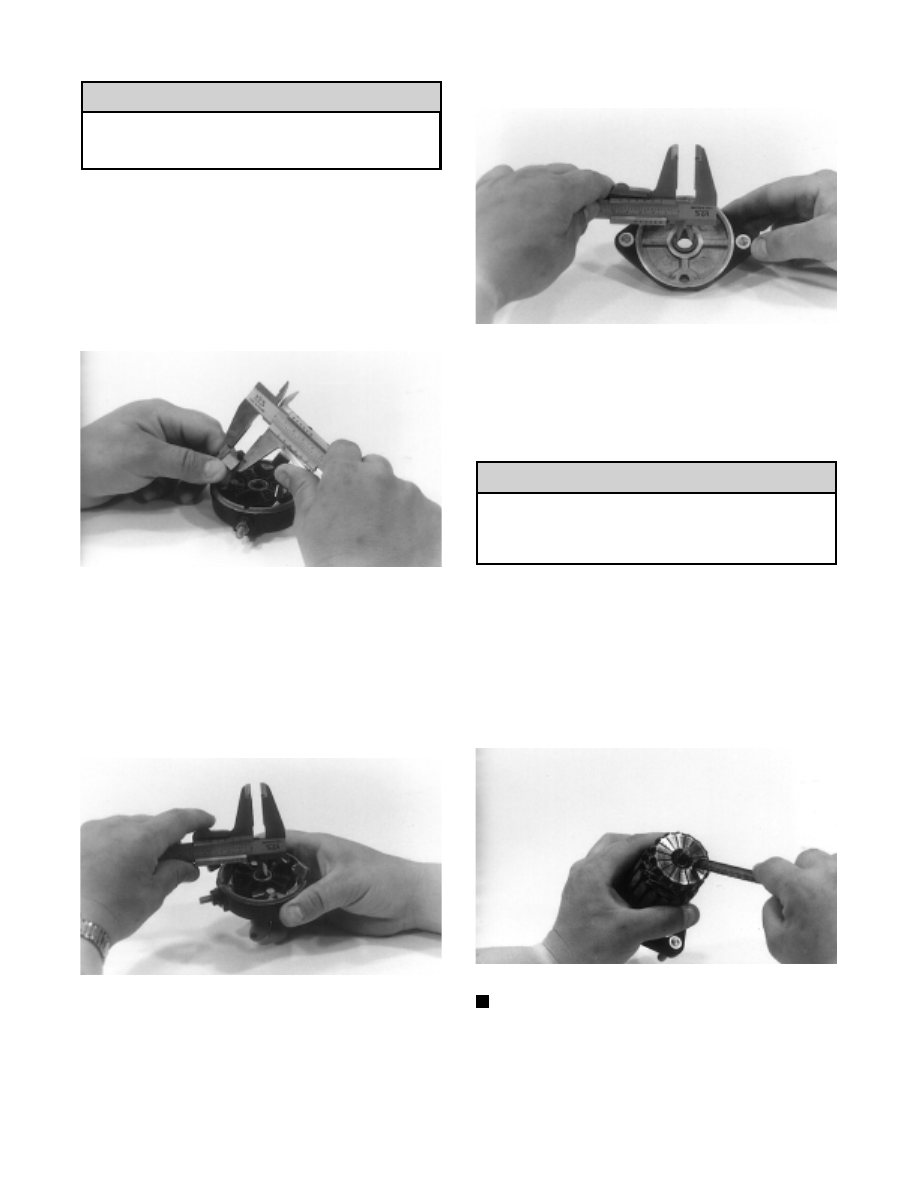Snowmobile Arctic Cat (2000 year). Instruction - part 75

Do not wash the armature and brushes in any
kind of solvent. Use only compressed air and
clean dry cloth in cleaning these components.
2. Inspect all threaded areas for damaged or stripped
threads.
3. Inspect the brush holder assembly and brushes for
damage or wear. Using a calipers, measure the
length of the brushes. If brush measurement is less
than 7.5 mm (0.30 in.), replace brushes as a set
along with new brush springs.
Fig. 5-68
AI030
4. Inspect brush leads for cracks, wear, or fraying. If
any of these conditions exist, replace the brushes as
a set along with new brush springs.
5. Inspect the end-cap bushing for wear. Using a
calipers, measure inner diameter at the end-cap
bushing. If found to be 8.6 mm (0.338 in.) or larger,
replace the end cap.
Fig. 5-69
AI031
6. Inspect the front-cap bushing for wear. Using a
calipers, measure the inner diameter of the
front-cap bushing. If found to be 13.2 mm (0.523
in.) or larger, replace the front cap.
Fig. 5-70
AI032
7. Inspect the brass commutator end of the armature
for any burned spots or damage. If the commutator
is slightly burned or damaged, the armature must be
replaced. This is a molded commutator and no
attempt to turn it down in a lathe should be tried.
Do not use emery cloth to clean the commutator
as emery particles will become imbedded in the
brass commutator resulting in a short circuit.
Use only #00 grit sandpaper.
8. Inspect the commutator end for buildup in the
grooves. Buildup in the grooves must be removed to
prevent any chance of arcing between individual
sections of the commutator. Carefully remove any
buildup using a thinly ground hacksaw blade. Do
not cut any deeper than the original groove which
can be seen by looking at the commutator from the
side.
Fig. 5-71
AI033
NOTE: After cleaning any buildup from the
commutator, use compressed air to clean.
9. Inspect the armature for shorting. Use the
multitester and the following procedure:
A. Set the selector on the X1K position; then touch
the leads and zero the meter.
! CAUTION
! CAUTION
5-46